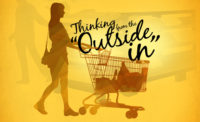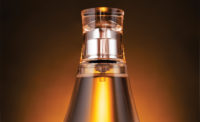Appealing to Rational and Emotional Customer Thinking
Applying behavioral economics to win at the shelf.


To navigate overwhelming choice in store and quickly sort options, shoppers rely on System 1 thinking, which is largely automatic, visceral and subconscious. All images courtesy of PRS IN VIVO

Directly asking shoppers about their priorities can be misleading, because they tend to rationalize their decisions and overstate the role of features, benefits and prices.

Behavioral economics emphasizes the importance of developing and assessing new products and packaging in shelf context rather than in isolation.

Behavioral economics emphasizes the importance of developing and assessing new products and packaging in shelf context rather than in isolation.





Throughout the past decade, behavioral economics has made an enormous impact in the realm of academia, government and public policy. Today, this framework is now entering the world of marketing and consumer research — and its influence will be profound.
As conveyed through the work of Nobel Prize-winning economist Daniel Kahneman, Profs. George Lowenstein (of Carnegie Mellon), Dan Ariely (Duke University) and others, behavioral economics turns conventional thinking on its side. Specifically, it questions the central premise of traditional economics, which is that people are inherently rational decision makers who maximize their self-interest by carefully weighing the pros and cons of their options. In place of this rational “Mr. Spock” model, it puts forth a “Homer Simpson” model of human behavior, which states that our decisions are largely driven by a wide number of factors (such as impulses, habits, social norms, etc.) that operate beneath our consciousness.
Behavioral economics provides a new way for us to think about shopper behavior, with direct implications for better understanding shoppers and developing more successful packaging, in-store communication and new product launches.
predictably irrational: three core principles
The science behind behavioral economics is quite extensive, with academic research illustrating how minor changes in a person’s environment can have an enormous impact on his or her actions. For example:
- In Copenhagen, the introduction of printed footsteps in the streets leading to garbage cans reduced littering by nearly 50 percent.
- In California, the introduction of social norms on utility bills (a comparison of one’s energy usage versus that of the neighbors) led to dramatic improvements in energy efficiency.
Across studies, however, several powerful ideas emerge, all of which have direct implications for understanding (and influencing) purchase decisions:
system 1 versus system 2 thinking
In his book Thinking Fast & Slow, Kahneman explains that people use two types of thinking to navigate their busy lives:
- System 1: Automatic, subconscious, extremely fast, leveraging emotion (visceral)
- System 2: Conscious, works slowly, examines, calculates and weighs evidence (rational)
Clearly, this framework is directly relevant to shopping, where the dominant reality is that of overwhelming choice. In aisle after aisle, shoppers encounter hundreds of products, and they rely on System 1 to quickly sort through these options. Indeed, this dynamic is repeatedly seen in PRS IN VIVO’s in-store and ShopperLab studies: The initial shopping experience is primarily a de-selection process, driven by what people see (and miss), what they recognize and how they feel. The more rational System 2 component (comparing features, benefits and prices) typically doesn’t occur until the end of the shopping process, when we consider a small number of finalist options. In fact, the more rational side of shopping sometimes doesn’t come into play at all, particularly when we shop on auto-pilot and default to the familiar in frequent and habitual product categories.
the drivers of influence
In Predictably Irrational, Ariely speaks to the many subconscious forces (social, emotional, contextual, etc.) that impact our everyday decisions. Importantly, he emphasizes that these factors (which we call the Drivers of Influence) are consistent and predictable. Thus, while people may not always act rationally, their behavior and their decisions are not random, and drivers such as priming, framing and reciprocity can be employed to impact how people behave.
The initial focus (of academics and policymakers) has been to employ these proven levers to nudge people toward more positive behavior in the public sphere (less littering, less drunk driving, etc.). However, these same factors can influence people’s choices in the aisle, particularly when used as a complement to more traditional and rational forms of shopper marketing.
the importance of context
A third tenet of behavioral economics is that our decisions are driven largely by how choices are framed (the “choice architecture”). To paraphrase Ariely, “We don’t really know what we want until we see it in context.”
In the world of consumer goods marketing, the choice architecture is typically the shelf set (or increasingly, the digital/e-commerce screen). And at PRS IN VIVO, we do frequently find that the assortment of products at the “first moment of truth” has an enormous impact on shoppers’ selections. Most notably, where a new product is shelved often has a tremendous impact on how it performs. That’s because our perceptions and decisions are contextual rather than absolute.
Taken collectively, these three behavioral economics concepts help to explain the consistent gaps between what shoppers say and what they actually do. When asked how they will make a decision — or why they selected a certain product — people tend to rationalize their behavior. They usually speak to specific product features, benefits or pricing. In behavioral economics terminology, they play back their System 2 decision process because that’s what they recall — and because it fits their self-image as clever and rational shoppers. However, this feedback can be quite misleading, because it misses much of the real story. Because when PRS IN VIVO observes shoppers (in stores or in ShopperLabs), we see the System 1 process in action — and the impact of the environment on their behavior. For example, mobile eye-tracking often shows us that familiar brand blocks (Colgate red, Tide orange, etc.) grab shoppers’ attention, impact their aisle navigation and ultimately drive purchase decisions. However, shoppers typically lack the awareness and vocabulary to speak about this process, because it happens so quickly and subconsciously.
designing for the system 1 shopper
Behavioral economics provides us with a deeper and more accurate understanding of how people really make purchase decisions. But how can we apply this learning to be more effective in store?
On the tactical level, there are many applications for enhancing category management and product assortment (choice architecture) and improving promotions, in-store signage and on-pack messaging (by employing factors of influence such as anchoring, framing and reciprocity).
- In one study, the addition of a point-of-sale message (“No more than 12 purchases per person”) served as an anchor that drove shoppers to dramatically increase their average quantity of soup purchases.
- In another case, employing reciprocity (by changing the structure of a frequent-user rewards program) dramatically influenced the impact of a promotion.
On a more strategic level, viewing the world through a behavioral economics lens reminds us of the need to design for the System 1 shopper. Most importantly, it underscores the importance of being visible and instantly recognizable at the shelf. Through our eye-tracking studies, we see that shoppers are looking for familiar visual cues as shortcuts to help them navigate complex aisles and make quick decisions. Thus, it is critical for large, established brands to leverage their distinctive assets (colors, shapes, icons, etc.) to break through clutter and foster recognition. In addition, large brands desperately need to facilitate shop-ability, so that shoppers can find familiar SKUs easily and remain in autopilot mode. Conversely, the key challenge for new products (and smaller brands) is to disrupt this pattern of automatic and habitual System 1 shopping, and push shoppers into a more rational and considered mode where they are open to alternatives. Unique packaging structures and form factors can be powerful in driving this disruption.
Second, behavioral economics emphasizes the importance of connecting at a visceral and emotional level. For while shoppers often say that they want features, benefits and bargains, ShopperLab studies have shown that visceral, emotive communication is often more effective in driving purchase. Furthermore, we’ve seen that there’s considerable danger to overloading a package (or display) with claims: In addition to creating clutter, this words-based approach works solely on a rational System 2 level. In many cases, a more effective strategy is to leverage a distinctive pack shape or texture to convey a positive feeling (premium, sophisticated, etc.) and to use signage to speak to the underlying emotional benefit (protection, beauty, indulgence, etc.).
This framework also has definite implications for the research and development process, as it highlights:
the importance of developing and screening new concepts within a shelf context
Behavioral economics reminds us that context is critical in framing and impacting purchase decisions. Thus, to accurately predict the impact of a new product or package in market, we need to replicate the shopper’s choice architecture in the aisle. Moreover, if we want to create truly breakthrough ideas, we need to start in the aisle — and find ways to break through, connect viscerally and disrupt habitual shopping behavior. In fact, a primary reason so many new products fail is because they are developed and screened in isolation (via concept boards), far removed from the realities of the shopping process.
measure and emphasize observed behavior rather than claimed purchase interest
Historically, consumer research has focused on shoppers’ stated perceptions and claimed purchase interest, largely because these measures are both familiar and easy to gather. But behavioral economics tells us that these measures are unreliable predictors, because they focus exclusively on rational System 2 thinking and miss the larger subconscious (and contextual) shopping experience. Instead, we need to focus on measuring visibility, recognition, engagement, shop-ability and selection on shelf. These behavioral System 1 measures all have proven linkages to in-market performance.
the limitations of asking “why?”
Finally, behavioral economics reminds us to fight the temptation to ask shoppers “Why?” When people don’t purchase our products, the natural inclination is to probe further to gather explanations. But we need to remember shoppers’ tendency to rationalize, along with their limited ability to speak about the System 1 sorting process and the drivers of influence underlying their decisions. Thus, rational probes are likely to lead to rational (and perhaps limited) answers. Instead, we need to observe and study the shopping process with tools such as eye tracking, initial recognition and emotional/visceral measurement. This will help us to uncover where a breakdown occurred (“Did the person never even see us? Was she confused at the shelf? Did she default to a more familiar alternative?).
starting with the shopper (and diving beneath the surface)
As marketers and researchers, it is tempting (and comforting) for us to remain in a familiar System 2 world in which we:
- Emphasize features, benefits and bargains to shoppers, through cluttered packs and in-store signage
- Ask people direct questions about how they shop and what they intend to buy
- Test new packs and products in isolation, away from the shopping context
But intuitively, we all know (from personal experience) that our decisions are not purely rational and that solely fact-based approaches have limitations in influencing shoppers.
Certainly, we are continuing to learn about the complexities of human decision making. However, behavioral economics represents an important step forward in encouraging us to dive beneath the surface and think beyond rationality in developing (and testing) new products, packs and in-store communication. Perhaps most importantly, this new framework reinforces just how necessary it is to ground ourselves (and our efforts) in the aisle, in the midst of the shopping experience. Marketers that keep this perspective and focus on shoppers’ actual behavior are far more likely to drive in-market success.
Looking for a reprint of this article?
From high-res PDFs to custom plaques, order your copy today!











